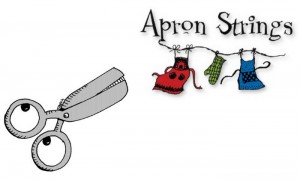 How many times have you heard a teacher in a high school classroom say, “Well you are in high school now, you can’t get away with “fill in the blank” anymore!” From turning in assignments late, not doing homework or mild misbehavior problems, we as educators, expect that the second fourteen year-olds hit our doorstep they will somehow walk across an invisible threshold into “mature high school land;” they will abandon their juvenile ways and acquiesce to our geatest hopes and expectations with very little motivation, guidance or instruction.
How many times have you heard a teacher in a high school classroom say, “Well you are in high school now, you can’t get away with “fill in the blank” anymore!” From turning in assignments late, not doing homework or mild misbehavior problems, we as educators, expect that the second fourteen year-olds hit our doorstep they will somehow walk across an invisible threshold into “mature high school land;” they will abandon their juvenile ways and acquiesce to our geatest hopes and expectations with very little motivation, guidance or instruction.
Research tells us that transitional years for students (kindergarten, sixth grade, ninth grade and freshmen year of college) incite stress upon students trying to learn a new regime academically, socially and emotionally (Roybal, 2014). As compared to eighth grade, students in ninth grade [can] decline in attendance, have decreased GPA’s and less extra-curricular participation (Isakson, 1999), which leads to increased behavioral problems (Rumberger, 2011). This, right away in their high school career, begins to dig a hole that some students never climb out from; in fact, failing a core course in the freshmen year is a leading predictor of whether a student will drop out (Rumberger 2011). Yet, many schools still do not address this, very poignant rite of passage, with the importance it deserves. Instead we assign students’ classes and teachers that ask them produce work, demonstrate skills or act in ways they have not yet been taught and then belittle their efforts when they attempt and fail.
Teachers and schools alone cannot be held completely responsible for the demise of youngsters in high school; parents and family life play a role as well. Isakson, found that students who are more autonomous from their parents as they begin high school actually perform worse and suffer more than other students who are more dependent on their parents through this transition (Isakson, 1999).
So is it really time to cut the apron strings or should we hold on just a little while longer, while our still maturing students, gain the skills and strategies necessary to survive high school?
Schools and parents can help students through this transition by providing stepping-stones to help them navigate the path. Many schools across the country have adopted ninth grade transition programs that address these sources of stress head on. They work with teachers to design programs that teach students coping skills, learning strategies and effective study behaviors. They provide more controlled settings and environments that allow students’ structured freedom and safety to learn without fear of failing [grades]. These schools work with parents and the community to help educate them about high school, students and how to navigate the maze to college.
Schools with effective transition programs have seen increases in student achievement, attendance and teacher morale (Supovitz, 2005). So why aren’t more high schools jumping on the bandwagon?? A simple answer in today’s accountability driven educational system is that successful transition is not a “tested” area. A schools’ grade is not necessarily reflective of their culture or climate and therefore justifying time and money to promote this type of endeavor is halted. It takes strong leadership, who has spent time investigating declining (or stalling) student achievement, who are willing to look reflectively to solve the mystery. It’s not solved by simply making teacher changes or adjusting the curriculum; true systemic changes must take place in schools to address the cognitive and behavioral needs of the students they serve; by changing instructional practice and school structure to positively affect student engagement.
Isakson, K., & Jarvis, P. (1999). The adjustment of adolescents during the transition into high school: A short-term longitudinal study. Journal of Youth and Adolescence, 28(1), 1-26.
Roybal, V., Thornton, B., & Usinger, J. (2014). Effective Ninth-Grade Transition Programs Can Promote Student Success. Education, 134(4), 475-487.
Rumberger, R. W. (2011). Dropping out : Why students drop out of high school and what can be done about it. Cambridge, Mass.: Harvard University Press. http://site.ebrary.com/id/10518209
Supovitz, J. A., & Christman, J. B. (2005). Small Learning Communities That Actually Learn: Lessons for School Leaders. Phi Delta Kappan, 86(9), 649-651.